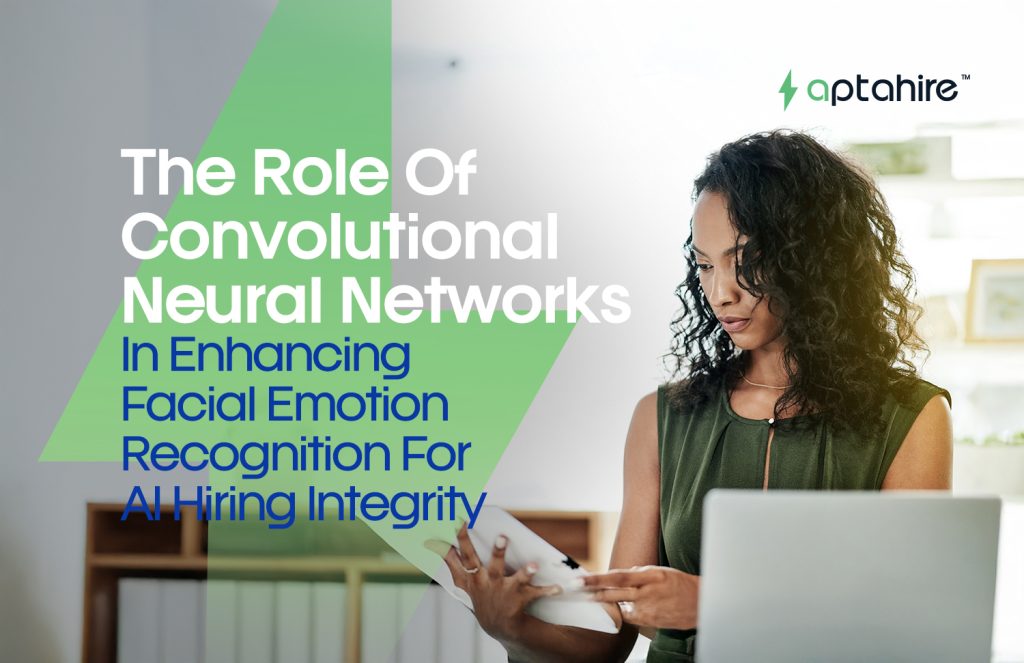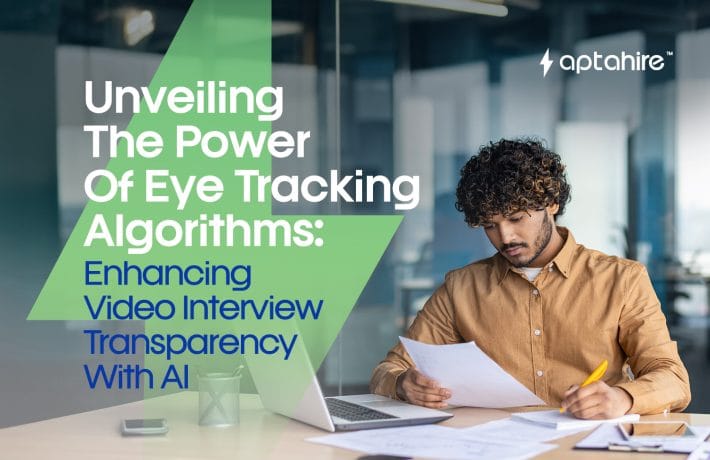The Role of Convolutional Neural Networks in Enhancing Facial Emotion Recognition for AI Hiring Integrity

Welcome to the Age of Emotion-Aware Hiring
The job interview has gone virtual, and with it comes a revolution in how candidates are assessed. Beyond resumes and rehearsed answers, modern hiring platforms are turning to emotion-aware AI systems to decode the most subtle form of communication: facial expressions.
At the heart of this emotional intelligence lies Convolutional Neural Networks (CNNs), a technology that mimics the human visual cortex to make sense of complex facial cues.
So, how does it work? And more importantly, how does it improve hiring integrity? Let’s unpack it all.
What Are Convolutional Neural Networks (CNNs)?
CNNs are a special type of deep learning algorithm designed to analyze visual data. They are widely used in applications such as image recognition, object detection, medical diagnosis, and now, facial emotion recognition in interviews.
Here’s how CNNs function:
- Convolutional Layers scan small portions of the image (like eyes or mouth).
- Pooling Layers reduce the complexity while preserving important features.
- Fully Connected Layers interpret the features and make predictions (e.g., “happy” or “stressed”).
The network learns which combinations of facial features correlate with specific emotions through thousands of training images.
Facial Emotion Recognition: Beyond Just Smiles and Frowns
Facial Emotion Recognition (FER) systems aren’t just about identifying a smile or a frown. With CNNs, they can understand:
- Microexpressions: fleeting involuntary expressions (lasting only 1/25th of a second)
- Facial muscle tension: indicates stress, nervousness, or alertness
- Eye behavior: squinting, blinking frequency, gaze direction
- Symmetry and balance: detects faked or forced expressions
These subtle indicators are critical in determining authentic emotional responses in high-stakes scenarios like interviews.
The CNN-Driven FER Pipeline in Virtual Interviews
Let’s look at the actual workflow of how CNNs process facial emotions during an AI interview:
1. Face Detection and Alignment
The system detects and crops the face from the video frame, even if there are multiple faces. It then aligns it using facial landmarks like eyes, nose, and mouth.
2. Preprocessing for Consistency
Lighting, brightness, and image size are normalized to ensure consistent input for the CNN model.
3. Feature Extraction Using Convolutions
The CNN extracts feature maps from different facial areas: brows, eyes, cheeks, lips; and identifies movement and shape changes.
4. Emotion Classification
The processed features are passed through fully connected layers to classify the face into emotion categories such as:
- Happy
- Sad
- Neutral
- Surprised
- Angry
- Disgusted
- Fearful
5. Temporal Emotion Tracking
The system tracks emotion progression throughout the interview to detect:
- Authentic engagement
- Sudden emotional shifts
- Consistency between words and expressions
Reinforcing Interview Integrity with FER
Interview manipulation is on the rise, coaching, multitasking, even deepfakes. CNN-powered FER acts as a layer of behavioral validation by:
- Detecting rehearsed vs. spontaneous emotion
- Flagging moments of discomfort or hesitation
- Spotting coached answers that don’t match emotional tone
- Creating emotion timelines for human reviewers
This enhances the credibility and transparency of the interview process.
Training CNNs for Emotion Recognition: Datasets & Techniques
To understand emotions, CNNs must be trained with labeled data. Common datasets include:
- FER-2013: 35,000 grayscale images across 7 emotion classes
- AffectNet: Over 1 million facial images with manually annotated emotion labels
- CK+ (Cohn-Kanade Plus): Annotated facial videos showing transition from neutral to peak emotion
- JAFFE: Focuses on Asian female facial expressions
Techniques like data augmentation, transfer learning, and dropout regularization help CNNs generalize better across diverse face types and conditions.
Real-World Applications and Stats
Here’s how organizations are benefitting from CNN-powered FER:
- HireVue, a leader in AI interviews, uses FER along with voice and speech analysis to assess over 1 million candidates annually.
- One multinational reduced interviewer bias complaints by 43% after implementing FER.
- A pilot study by MIT found that combining CNN-based FER with voice analysis improved candidate authenticity detection accuracy by 31%.
Cultural and Ethical Considerations
Emotion interpretation isn’t universal. A smile in Japan might signify something different in Brazil. That’s why FER must be trained on diverse, multicultural datasets.
Also, ethical hiring demands:
- Transparency: Informing candidates about FER use
- Consent: Asking for permission to analyze facial expressions
- Bias Mitigation: Constantly auditing models for fairness
- Explainability: Allowing humans to review AI decisions
Complementing, Not Replacing Human Judgment
CNNs don’t replace hiring managers, they enhance their decision-making. Think of FER as an emotional radar: it picks up things humans might miss, but doesn’t make final calls.
In fact, the most effective systems combine FER with:
- Speech-to-text analysis
- Natural Language Understanding (NLU)
- Keystroke and mouse tracking
- Video background consistency checks
The Future of FER in Hiring: What’s Next?
Here’s where things are headed:
- Emotion AI + Eye-Tracking: Identify gaze patterns to assess attention.
- Emotion Timeline Reports: Graphical representation of emotional highs and lows across the interview.
- Synthetic Data Training: Generate emotional expressions using GANs to better train CNNs.
- Adaptive Interviews: The AI changes its questions in real time based on candidate emotions.
Recap: Why CNNs Are Game-Changers for Hiring Integrity
| Feature | Impact |
| Emotion Detection | Adds behavioral intelligence |
| Real-time Analysis | Monitors subtle cues throughout interview |
| Objectivity | Reduces human bias and inconsistency |
| Scalable | Can assess thousands of interviews daily |
| Transparent | Enables human-AI collaboration in hiring |
Final Thoughts
Facial expressions are silent signals that speak volumes. With Convolutional Neural Networks, AI can now interpret these signals with astonishing accuracy and consistency. For recruiters, this means deeper insight. For candidates, it means fairer, unbiased assessment.
As long as we use it transparently and ethically, CNN-powered FER isn’t just futuristic tech, it’s a powerful ally in building a better, more human-centered hiring process.
FAQs
1. What exactly are Convolutional Neural Networks (CNNs) and why are they important in AI hiring?
CNNs are deep learning models designed to recognize patterns in visual data like images or video frames. In AI hiring, CNNs are used to analyze facial expressions in real-time video interviews, enabling the system to detect emotions such as happiness, stress, or nervousness, helping assess candidate authenticity, engagement, and emotional intelligence.
2. How does Facial Emotion Recognition (FER) work in virtual interviews?
FER captures and analyzes facial muscle movements using video frames. CNNs break down these frames into pixels, extract facial features (like eye movement, mouth shape), and classify them into emotion categories (e.g., happy, sad, neutral). This emotional data is tracked throughout the interview to identify behavioral consistency.
3. What emotions can CNN-based FER systems accurately recognize?
Most FER systems can reliably detect the seven universal emotions:
- Happiness
- Sadness
- Anger
- Fear
- Disgust
- Surprise
- Neutral
Some advanced systems are also trained to pick up microexpressions and complex emotional states like frustration or confusion.
4. How accurate is FER using CNNs in real-world interviews?
In controlled environments, FER systems using CNNs can reach accuracy levels of 90–95%. In real-world scenarios with varying lighting, angles, and video quality, the accuracy typically ranges from 75–85%, depending on the quality of input and training data diversity.
5. Does FER detect dishonesty or lies in interviews?
Not directly. FER can detect emotional inconsistencies—for instance, if a candidate says they’re confident but shows signs of anxiety or stress. While it doesn’t label someone as dishonest, it raises behavioral red flags that recruiters can review alongside other data points.
6. Are there any privacy or consent concerns with FER in hiring?
Yes. Ethical AI hiring practices must:
- Clearly inform candidates about FER usage.
- Obtain explicit consent before analysis.
- Explain how the emotional data is used and stored.
- Ensure data anonymization or deletion after evaluation.
Transparency is key to trust in AI hiring systems.
7. How are CNNs trained for facial emotion recognition?
CNNs are trained using large datasets of labeled facial images showing different emotions. Popular datasets include:
- FER2013
- AffectNet
- CK+
- JAFFE
Training involves thousands of iterations where the model learns to identify pixel patterns linked to specific emotions.
8. Is FER biased toward certain races, genders, or cultural groups?
Unfortunately, yes,bias is a real concern. Many datasets are over-represented by Western or lighter-skinned faces, causing reduced accuracy for underrepresented groups. Ongoing research focuses on improving data diversity and fairness through inclusive training sets and regular audits.
9. Can FER results be the sole basis for rejecting a candidate?
No, and they shouldn’t be. FER is designed to augment, not replace, the evaluation process. Reputable platforms combine FER insights with skills assessments, speech analysis, and human review. Making hiring decisions based solely on emotion detection is neither ethical nor legally sound.
10. What is the future of CNN-based FER in hiring?
The future holds exciting developments:
- Multimodal AI combining FER with voice tone, body movement, and text analysis.
- Emotion timelines to track emotional flow across the interview.
- Cultural calibration for emotion recognition across global candidates.
- Real-time interviewer avatars that adapt based on candidate emotions.
As long as it’s used transparently and ethically, FER will become a trusted tool in enhancing human-centric hiring.

